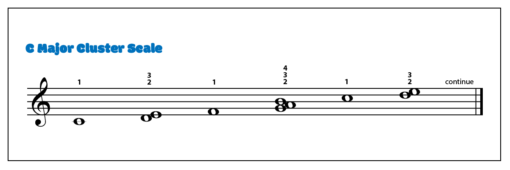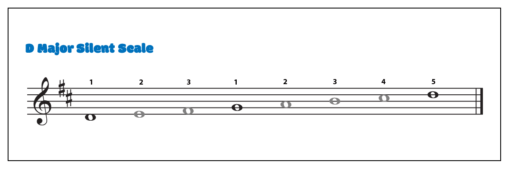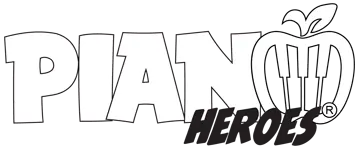Playing scales is the most common way to develop finger dexterity, hands independents and coordination. There is no doubt that scale practice often becomes a chore for many students. The boredom of going up and down together with thoughtless playing diminishes the value of such an important technique and it turns into rooting unhealthy habits. In order to keep students engaged and interested in practicing scales, it is crucial to maintain the wild variety of ways how scales can be practiced. Here are some Progressive Strategies to Practice Scales with Intermediate Students that make scale learning much more accessible.
Phase 1
Learn Notes
It is quite challenging and strongly connected to the pattern understanding stage.
Clusters
Notes are grouped to support pattern learning: 1 – 2/3 – 1 – 2/3/4 – 1, etc. for common finger pattern scales and 2/3/4 – 1 – 2/3 – 1 – 2/3/4 – 1, etc. for special finger pattern scales.

Silent notes
Only finger number 1 and 5 plays notes, all others are being silently walked over.

Short contrary motion
In the first place, both hands start on the tonic, one octave apart and move the contrary two octaves then back. This strategy is appropriate only for common finger pattern scales.
Phase 2
Work in Progress
When the finger patterns and notes are secure it is time to start using more sophisticated ways of practicing scales. A variety of rhythms, dynamics, and articulation are some possibilities to diversify everyday routine.
Direction mingle
Parallel motion down then up, one hand plays up, another plays down, contrary broken – start in the middle with the right hand, play down one octave, continue with left going up two octaves, the right-hand plays down one octave.
Rhythm extravaganza
Playing in the eighth, triplets, sixteenth for one metronome tick, quarter-2 eighths-quarter-two eighths-etc., one quarter in the left hand for two eighths in the right, or the opposite.
Dynamics blend
Piano, forte, crescendo, diminuendo, then contrast – one hand piano, another forte.
Articulation duo
Staccato, legato, with the accents on odd/even.
Phase 3
Mastery
This is the stage when all scales are very well learned and performed with ease. There comes the time to experiment! Two note slurs, 3 note slurs, one hand staccato, another legato, starting from the different degrees of the scale, playing scales in thirds and sixth, one hand in major, another in a parallel minor.
Additionally, to prepare students for the exam in the last month of practicing I found it very useful to use practice cards. The deck of cards contains every single scale and chord, a student has to shuffle the deck and take 5 cards. This helps with playing a mix of scales and chords plus incorporates the element of surprise.
Scale Readiness Practice Cards (RCM Piano Level 3)
Scale Readiness Practice Cards (RCM Piano Level 4)
Scale Readiness Practice Cards (RCM Piano Level 5)
Last Thought
Remembering that scales and chords are core pattern components of every single piece of music will help to build a comprehensive technical foundation that will be successfully implemented into performed repertoire later.
More Teaching Tips
Insights of the Russian method of scale playing are explained by Dr. James McKeever here.
Nicola Cantan’s series of posts and podcasts are full of ideas on how to make scales doable for students of different ages and levels.

